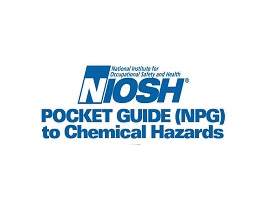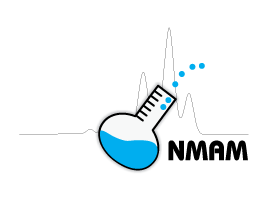Benzene

Overview
CAS No. 71-43-2
Benzene (C6H6) is a highly flammable, colorless liquid that evaporates quickly into the air. It is harmful to the eyes, skin, airway, nervous system, and lungs. Benzene can cause blood cancers like leukemia. Workers may be harmed from exposure to benzene. The level of exposure depends upon the dose, duration, and work being done
Benzene is found in products that are made from coal and petroleum. Lubricants, plastics, rubbers, dyes, and other chemicals can be produced with benzene. Some examples of workers at risk of benzene exposure include the following:
- Factory workers where steel or rubber is made or processed
- Workers in the printing industry or who work around printing inks
- Fire fighters who come in contact with toxic smoke
- Workers in gas stations, shoe making or repair, and who work in laboratories
NIOSH recommends that employers use Hierarchy of Controls to prevent injuries. If you work in an industry that uses benzene, please read chemical labels and the accompanying Safety Data Sheet for hazard information. Visit NIOSH’s page on Managing Chemical Safety in the Workplace to learn more about controlling chemical workplace exposures.
The following resources provide information about occupational exposure to benzene. Useful search terms for benzene include “benzol” and “phenyl hydride.”
NIOSH Chemical Resources
Related NIOSH Resources
- NIOSHTIC-2 search results for benzene – NIOSHTIC-2 is a searchable database of worker safety and health publications, documents, grant reports, and journal articles supported in whole or in part by NIOSH.
- Emergency Response Safety and Health Database (ERSH-DB) Benzene: Systemic Agent – ERSH-DB search results for benzene.
- Immediately Dangerous to Life or Health Concentrations (IDLH) of Benzene – NIOSH reviews relevant scientific data and researches methods for developing IDLH values.
Selected Publications
- Criteria for a Recommended Standard (Revised): Exposure to Benzene. DHHS (NIOSH) Publication No. NONE (1976) – Presents a revised standard to prevent the adverse effects of exposure to benzene over a working lifetime.
- NIOSH Criteria Documents: Criteria for a Recommended Standard: Occupational Exposure to Benzene – DHHS (NIOSH) Publication No. 74-137 (1974). Presents a standard to prevent the adverse effects of exposure to benzene over a working lifetime.
- NIOSH/OSHA Occupational Health Guideline for Benzene
- Volatile Organic CPDS (Screening) (No. 2549)
- Benzene by Portable GC (No. 3700)
- Hydrocarbons, Aromatic (No. 1501)
Related Resources
- ATSDR Toxicological Profile for Benzene
- ATSDR Medical Management Guidelines (MMGs): Benzene
- ATSDR ToxFAQs for Benzene
- EPA Acute Exposure Guideline Levels (AEGLs): Benzene
- EPA Air Toxics: Benzene
- EPA Chemistry Dashboard: Benzene
- OSHA Hazard Communication
- OSHA Safety and Health Topics: Benzene
- OSHA Standard 1910.1028: Benzene
- OSHA Chemical Sampling Information: Benzene
- OSHA Hazard Communication Standard
- NLM Hazardous Substance Data Bank: Benzene
- NLM Haz-Map: Benzene
- NTP Report on Carcinogens (Fourteenth Edition): Benzene
- RAIS Toxicity Profile: Benzene
- New Jersey Hazardous Substance Fact Sheets: Benzene
- American Cancer Society: Benzene
International Resources
- Canadian Centre for Occupational Health and Safety (CCOHS): Benzene
- European Chemicals Agency (ECHA): Benzene
- Gestis Substance Database
- International Agency for Research on Cancer (IARC) Supplement 7: Benzene
- International Chemical Safety Card: Benzene
- IPCS PIM 63: Benzene
- OECD Global Portal to Information on Chemical Substances
- WHO Environmental Health Criteria 150: Benzene



